
…mit einigem Gebackenem, einer Radiosendung über Weinbau in der Klimakrise – und wie immer den besten Links der letzten Tage.
Seit dem letzten Zuckersüß habe ich Chai-Kuchen, Apfel-Birnen-Streuselkuchen, Apfelmuffins mit selbstgemachtem Apfelmus, Dirty Chai Earthquake Cookies und Kaiserschmarrn gebacken.
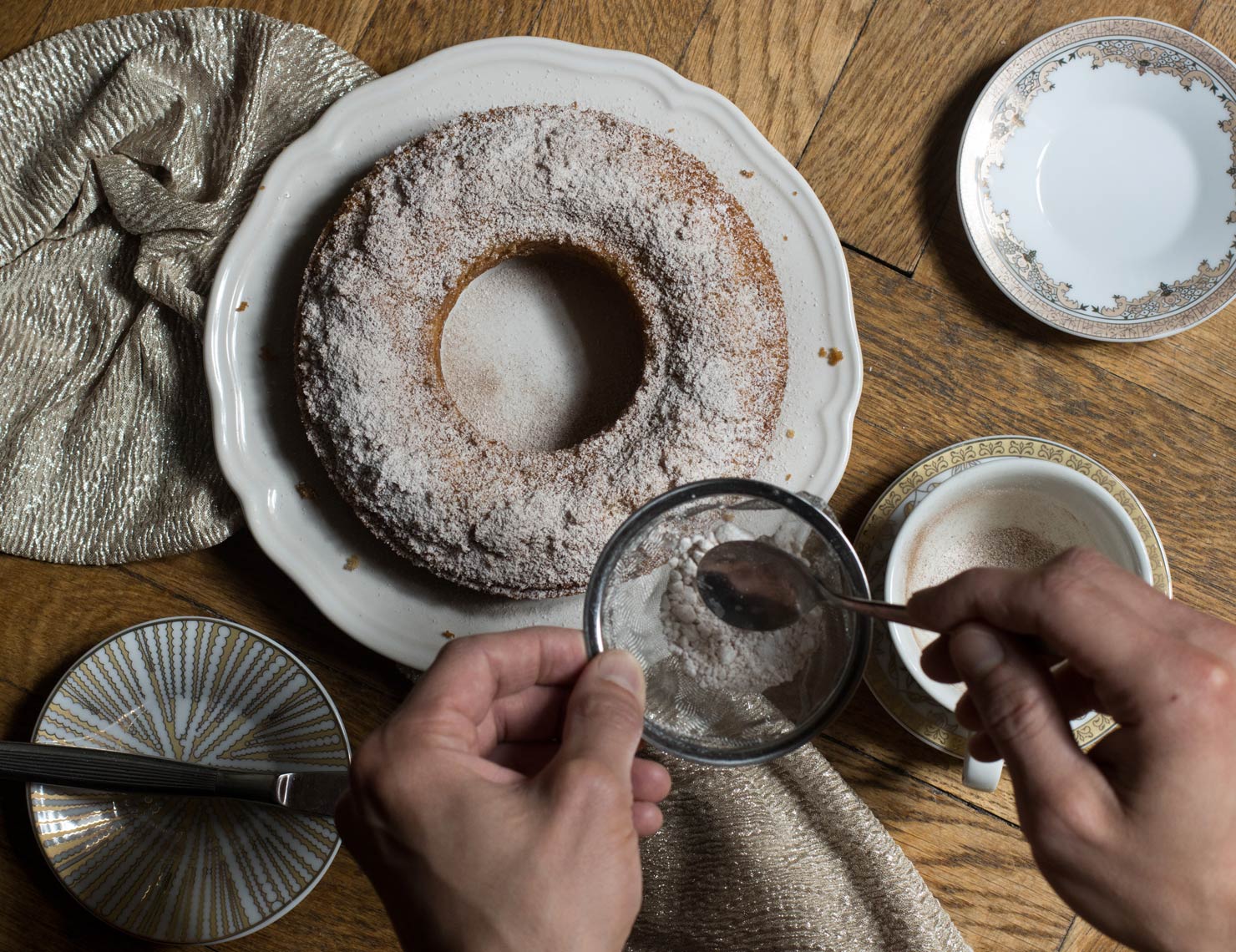

Gegessen
Selbstgemachte Gemüse-Tajine mit Tfaya, ein Kaisersemmerl-Sandwich mit kokospaniertem Tofu, Spiegelei, selbstgemachtem Mangold-Kimchi und Mayo, super Bratkartoffeln mit Spiegelei und Spinat – ein Gericht, das ich ganz und gar nicht mehr so fad finde wie als Kind.
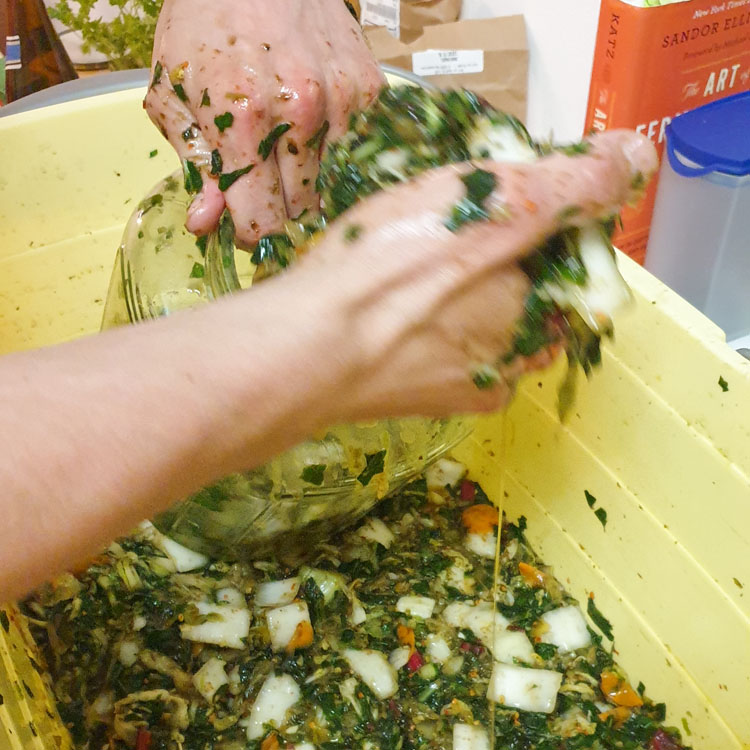
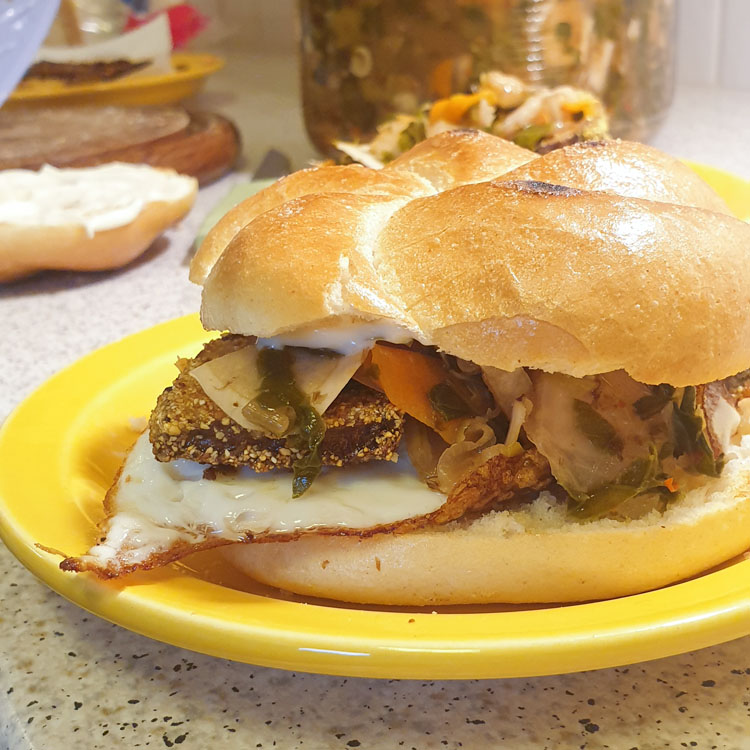
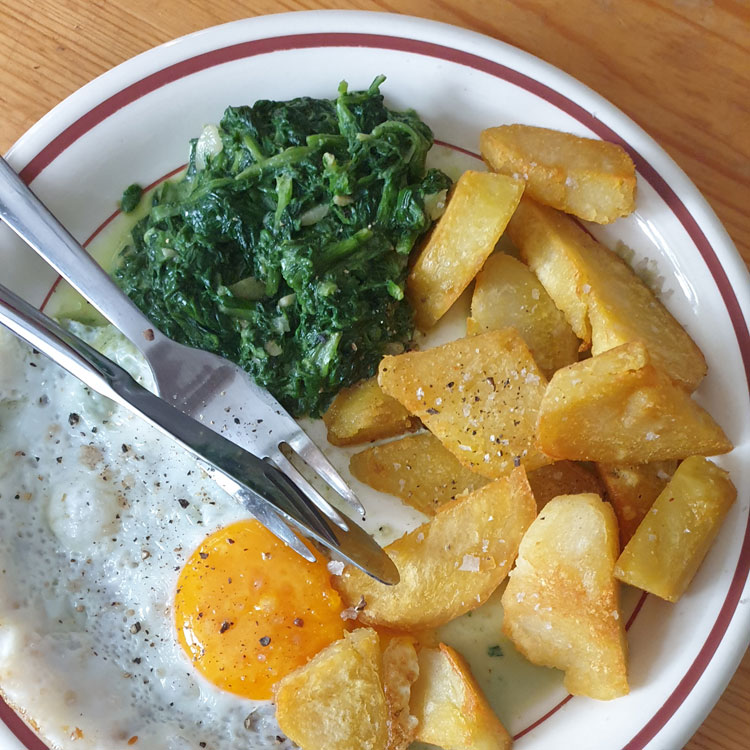
Eine Pfirsichkuppel (5,20€) bei VIOLA (1080), die ich mit dem dichten Buttermilchboden, der fluffligen Cremekuppel mit Pfirsichfüllung und -überzug insgesamt zu süß fand (was aber auch daran liegen mag, dass ich sie auf nüchternen Magen zum Frühstück gegessen habe). Bucheckern vom Wegesrand, von denen ich ein paar als Kuchenzutat aufgehoben habe.
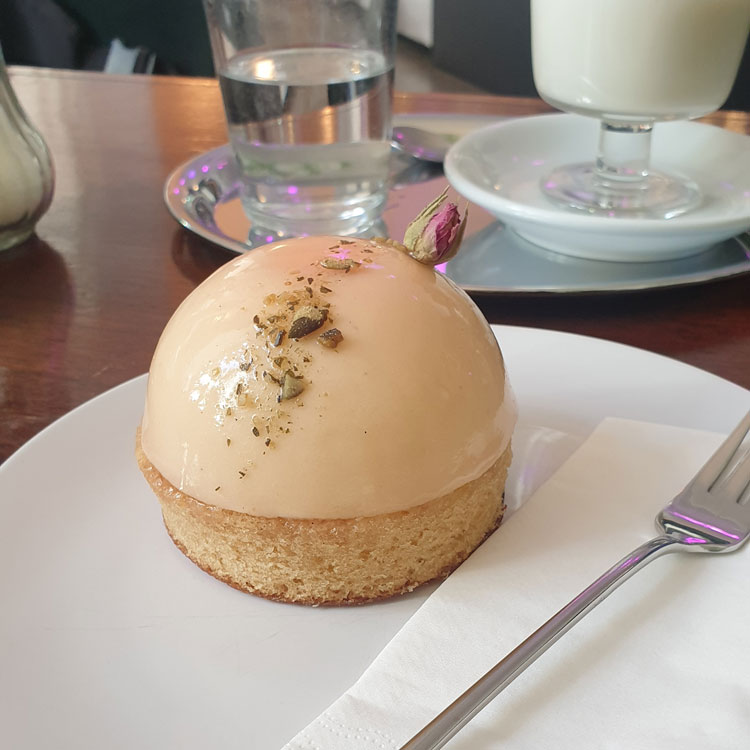
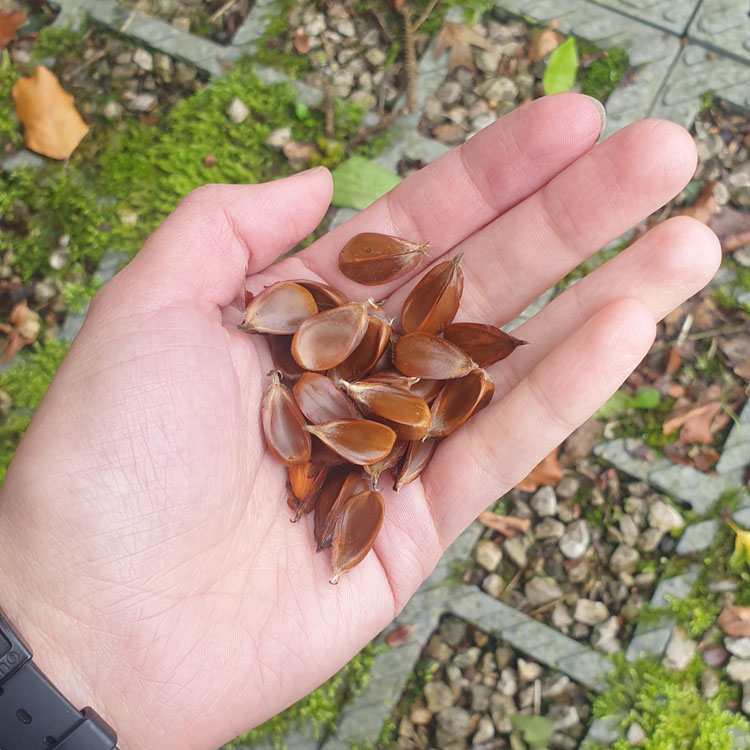
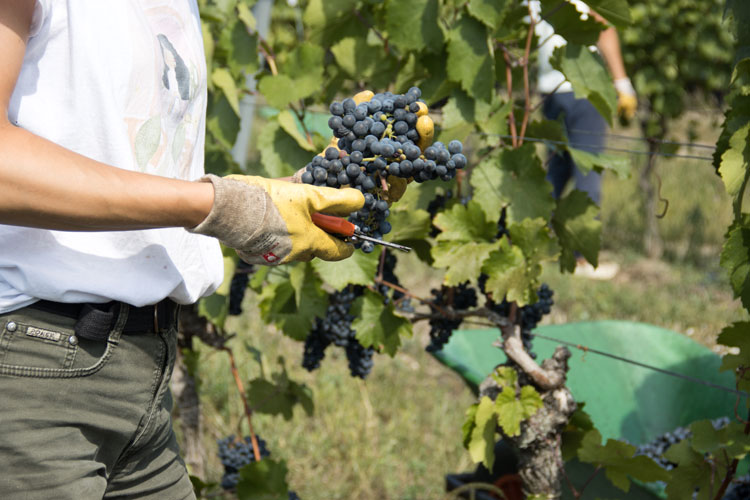
Super süße Zweigelttrauben vom Weingut Renner & rennersistas in Gols, das ich für meine aktuelle Radiosendung (s.u.) bei der Ernte besucht habe. Beim Basisseminar der Weinakademie habe ich in den letzten Wochen allerlei Weine verkostet (mein Liebling vom letzten Mal: Beerenauslese vom Weingut Grenzhof-Fiedler 2015, –honigsüß, leicht bananing und trotzdem frisch) und mir als Heimwegsnack immer Pommes geholt. Bei McDonald’s mag ich vor allem die süß-sauer-Sauce als Dip, FiveGuys finde ich in der Preisgestaltung (5,50€ für die kleinste Portion!) sehr frech, BurgerKing ist preislich ok und hat die mir liebsten Pommes mit viel zu kleinen Ketchuppackungen. Ich nehme gerne Tipps für Pommes-Läden in Wien (wichtig: späte Öffnungszeiten!) entgegen!
Veröffentlicht
Im Blog: Chai-Kuchen, Mit-Alles-Kekse und immer noch keinen Rückblick auf meine Reise in Marokko, auf der das Titelbild entstanden ist
Anderswo: Für Ö1 Moment Kulinarium habe ich eine Sendung über Weinbau in der Klimakrise gestaltet, „Grüner Veltliner in Gefahr? Wein und Klimawandel“ ist noch bis kommenden Freitag hier nachzuhören, hier habe ich meine Recherchenotizen gesammelt.
Übrigens organisiere ich gemeinsam mit meiner Ö1-Kollegin Anna Masoner und mosaik-klima-Podcaster/Radio-FRO-Gestalter Georg Steinfelder wieder ein Podcasting-Meetup! Es findet am 3. Oktober um 18h im ORF-Funkhaus statt, Ligthning-Talks gibts von Stefan Haslinger, Richard Hemmer und Jeanne Drach, mehr Infos und Anmeldung auf podcasterei.at.
Hier folgen meine liebsten Links der letzten Tage:
Rezepte
Steinpilz Creme Brulée – by Tobias Mueller
Wenns mit Trüffel funktioniert (s. mein Lieblingsgang beim letzten Mraz&Sohn-Besuch), warum dann nicht auch mit Steinpilzen!
Chewy Olive Oil Crinkle Cookies | Buttermilk by Sam
Zum-Butterpreis-ignorieren.
Chinese 5-Spice Pineapple Bundt Cake — Nik Sharma
Erinnert mich ein bisschen an die Ananas Tarte Tatin von 2019.
Damassonglace | lamiacucina
Schade, dass ich keine Gartenzwetschgen mehr zur Hand habe.
Torta di Riso – Splendido Magazin
So ähnlich ein süßes Abendessen meiner Kindheit.
Gogol Mogol – baltisches Zucker-Ei – Effilee
Eischaum beim Kuchenmasse-Vorbereiten „koste“ ich sehr gerne, warum nicht ein ganzes Dessert draus machen!
Texte
Von Bacher zu Weißmann. Wie sich Österreichs Bürgertum selbst zerstört. – Armin Thurnher – FALTER.at
Deutliche Worte vom Falter-Herausgeber zur neuesten Ankündigung des ORF-Generaldirektors:
Der Generaldirektor des öffentlichen Rundfunks in Österreich, also des ORF, gleicht dem österreichischen Zeitungsverleger insofern, als ihm der demokratische, der öffentliche Zweck seines Unternehmen so wurscht ist wie die Wurscht dem Vegetarier. Deswegen tut er alles, um diesen Zweck im Programm seiner Sender kleinzuhalten und der Politik, wo er kann, in den Hintern zu kriechen. Das schien einst ein Mittel zum edlen Zweck, hat sich aber durch lange Übung zur selbstberechtigten, stolzen und wohlbezahlten Existenzform entwickelt.
Nun treffen sich die beiden Verhaltensweisen idealtypisch: Der österreichische Zeitungsverleger (und sein Interessensvertreter, der dessen Eigenschaften in geradezu schnapsartig destillierter Klarheit vorführt) und der österreichische ORF-Generaldirektor entwickeln gemeinsam eine Geschäftsidee: Sie machen eines der besten österreichischen Medien kaputt: sie halbieren orf.at; und zwar wegen „Zeitungsähnlichkeit“. Das heißt, weil es die Zeitungen in für diese peinlicher Form an ihre Aufgaben erinnert, zu Diskurs und Kultur beizutragen. Weg damit!
Watching the world burn | Correspondent
Wie Klima-Reporter Marlowe Hood mit den psychologischen „Nebenwirkungen“ seines Jobs umgeht:
Allowing ourselves to be emotionally overwhelmed by the threat of climate change is clearly an indulgence we can’t afford. There’s too much at stake, too little time to act. Which is why folks doing strategic communication on global warming – the UN, green groups, scientists and arguably, the media – tread a very fine line.
How Did “Recipe Developer” Become a Famous Job? – Gawker.com
Im deutschsprachigen Raum ist „Rezeptentwickler_in“ noch nicht so ein Ding, wie mir scheint.
What defined recipe developers like Carla Lalli Music, Claire Saffitz, and Andy Baraghani was their combination of the restaurant-honed technique of the chef stars and the home-cooking approachability of a Barefoot Contessa, all wrapped up in a social-media-ready package primed for media opportunities and sponsorship. That blend of inspiration, education, and entertainment, boosted by restaurant-trained know-how, differentiated them from the food bloggers who had been around already, usually associated with feeding a family rather than cooking as clout or content creation.
Why Zines Are Food Media’s Experimental Cutting Edge – Eater (via Johannes Klingebiel)
Mir ist leider noch nie eines in die Hände gefallen.
Zines provide that space to refute the idea of culinary authority, or the idea that an “official” recipe can even exist. Cookbooks, through their heavy covers and glossy pages, communicate a degree of authority underscored by acquisition editors. But I trust the recipes in a zine a bit more, not because it’s gone through the machine of a publishing house, but because the zine is so carefully assembled — not simply in its make, but in its intentional bestowing of authority.
Helen Rosner on the Banal and the Beautiful | The Food Issue | Commercial Type
Ein Magazin mit dem Zweck, Schriftarten in Gebrauch zu zeigen, interviewt New-Yorker-Foodjournalistin Helen Rosner, die viel über ihren Job und ihre Rolle nachzudenken scheint:
„I think that what is happening when we talk about a food being elevated is that it is being wrapped in a different cultural aesthetic than the one in which it originated. So, when we talk about “elevation,” that context is usually European: somewhat minimal plates, French-style service, the trappings of what we have been trained to understand as high-end cuisine, with the ingredients, the preparations, the techniques, etc. of a different universe.
But “elevation” itself obviously is a problematic term because of the hierarchy it implies — that because you’re elevating it, you’re implying that it was in a low place. The status implications of using the term “elevation” are problematic and destructive, and rooted in white supremacy and European hegemony and the class architecture of high-end dining versus “cheap food,” which is also associated with, you know, dirtiness, and filth, and undesirability. The racialization of these hierarchies is built in.“
The Latest Restaurant Trend: Chaos Cooking – Eater
Wer kocht was, in welchem Kontext – in Österreich wird das wenig diskutiert.
Eventually, however, that demand for authenticity became too rigid a bar. After all, who gets to decide which is the ultimate version of a dish, especially when recipes vary so dramatically across regions? This led to the more recent “return” of fusion, or what chef Dale Talde calls “naturally fusion” — an understanding that many chefs grew up in multiethnic households, neighborhoods, and kitchens and what’s important is cooking with honesty. Joshua David Stein at the Wall Street Journal wrote that these new culinary mashups should be considered “a New New American Cuisine, an organic outgrowth of demographic shifts, democratic kitchens and the never-ending pursuit of flavor,” and it’s true they often seem to grow from a more honest, less cynical place than the fusion dishes of the ’90s. Still, it felt like there were rules that came with this “return.” Sure, you can cook from a variety of cuisines, the argument went, but there was a silent qualifier: as long as you have some legitimate claim to them.
How the Chicago Chef Iliana Regan Cooked Fanfiction – Eater
Dieser Text ist ewig lang und mäandert ziemlich herum, doch das beschriebene Restaurant und vor allem seine Chefköchin klingen enorm spannend.
The dinner was fairy tale-themed, highlighting the overlaps and contrasts in stories as told in the French and German traditions. The story of Cinderella was served twice, first as a Mother Goose pumpkin and foie gras soup, then with a nod to the Brothers Grimm, as fish wreathed in smoked twigs.
The two courses interpreted the Cinderella story: It was about fantasy narratives born of women’s roles in feudal society. In the first dish, the diner got to see the opulence of the French court and the woman’s role therein: her body a symbol of fertility mirroring that of the land itself. Foie gras is a luxury item whose production involves gavage, a devastating subversion of the natural digestive process. The resources and energy spent in order to produce one lobe is out of proportion with whom the final product is able to feed. (People paying for a tasting menu, Regan told me when we first spoke, may expect a few luxuries.) The dish’s production involves necessary cruelty and literal sacrifice: Some varieties of French female foie gras ducks are euthanized because they can’t produce the right size and quality of engorged liver.
Meanwhile, the next dish — the fish — was more explicit about domestic labor, given the ashes. In Regan’s version that point was driven home by the soup served just before it: The binary of a damning life in poverty or a glorious one of wealth is false. Women’s lives are disposable all of the time.
On Selling a Lifestyle – From the Desk of Alicia Kennedy
Food-Blogging/Writing-Meta:
I feel like I have to have two brains because I can’t have two lives or two apartments: In one, there’s the focus on “creation” for an audience; in the other, there’s actually eating and hanging out. Sometimes, they bleed into each other. This is where the problems come in, as demonstrated by my lighting freak-out: Where does my prop closet end and where do I begin?
It’s unavoidable: There’s always going to be a dominant look in food and we’re always going to want to look at pretty plates, so I think I shouldn’t be too hard on myself for moving the table. I do wish, however, that I didn’t think the success of my work would suffer because pasta wasn’t lit perfectly—that all imperfections need to be a studied choice, too. When I post something that’s not pretty, it must be clear that I know it isn’t pretty.
The Hard-Won Pleasures of a Yeasted Cake | The New Yorker
Ruby Tandoh erzählt Hefekuchen-Geschichte und bäckt Bienenstich:
For centuries, yeasted cakes weren’t a folly but a fact of life. Cultures around the world have developed their own variations, from Italian pandoro—so generously enriched with butter and eggs that it flushes gold—to babka, which has shape-shifted across kitchens and continents, from a simple brioche-like Polish cake to the baroque chocolate swirls of the babkas favored in modern Jewish-American cooking. In Central Europe, there was gugelhupf, a princely cake with a delicate, sweet crumb and, often, a garnish of almonds. Such “sweet, yeasty, breadlike cakes” were, as Anne Byrn notes in “American Cake,” among the first cakes to be baked by settlers in North America, where they were “leavened with yeast cultures . . . or made from the foamy barm skimmed from fermented beverages like beer.” As yeast consumes the sugars in flour, it releases carbon dioxide, which collects in tiny pockets in the dough. The gas expands upon baking, causing the cake to jump upward. The “hupf” in gugelhupf may be a nod to this yeast-driven “hop.”
Judith Holofernes im Interview: Lieb war gestern – taz.de
In meiner bubble viel geteilt:
„Jeder weiß, dass Produktivität keine Perspektive ist. Für den einzelnen Menschen ist es nicht nachhaltig und für den Planeten noch weniger. Ich habe darüber zwanzig Jahre gesungen und war selbst zweieinhalbmal mal im Burnout, einmal mit einer Meningitis, die wahrscheinlich auch stressbedingt war und die mich drei Monate ins Bett legte.
Aber dann kam die ganze Geschmeidigkeit, und wenn ich jetzt zurückschaue, ist da ganz viel Scham, weil ich nicht zu meinen Idealen stand. Inzwischen bin ich nachsichtiger mit mir selbst, aber ich bin einfach überall sehr geschmeidig gewesen. Ich komme schwer damit klar, wenn Männer in einem bestimmten Ton mit mir reden, ich bin sehr leicht einzuschüchtern. Mir wurde dann klar, ich muss üben, nicht immer klein und niedlich und kompatibel zu sein. Ich beschäftige mich seit 2000 mit der Ideologisierung von Arbeit und Vollbeschäftigung und dem Wert von Degrowth und Nichtstun und Dada-Techniken. Aber dann habe ich irgendwann gesehen, dass ich mich fast zugrunde gerichtet habe, weil ich so gut funktioniere.“
High-Low-Wendeschleifen – Mode, Kunst und kulturelle Aneignung – 54books
Mode so theoretisch zu betrachten, finde ich super interessant.
Diese Aufwertung betrifft allerdings nur das Produkt – z.B. die Pantolette – nicht diejenigen, aus deren sozialen und kulturellen Kontext das Produkt entnommen wurde. DHL-Mitarbeiter:innen dürften keinen Prestige-Gewinn durch die Adaption ihrer Arbeitsuniform durch Vetements erfahren haben, einige ‚Rich Kids of Instagram‘ hingegen schon. Um das DHL-Shirt überhaupt als künstlerisches Produkt sichtbar werden zu lassen, ist der soziale Kontext wichtig. Ohne den Porsche in der Einfahrt würde man eben doch nur wie der Postbote aussehen.
There’s something much more whimsical about the facilities in which most of the billionaires – or, more accurately, aspiring billionaires – actually invest. A company called Vivos is selling luxury underground apartments in converted cold war munitions storage facilities, missile silos, and other fortified locations around the world. Like miniature Club Med resorts, they offer private suites for individuals or families, and larger common areas with pools, games, movies and dining. Ultra-elite shelters such as the Oppidum in the Czech Republic claim to cater to the billionaire class, and pay more attention to the long-term psychological health of residents. They provide imitation of natural light, such as a pool with a simulated sunlit garden area, a wine vault, and other amenities to make the wealthy feel at home.
Bürgergeld ersetzt Hartz IV: Ein 17 Jahre alter Zombie – Kolumne – DER SPIEGEL
Samira El Ouassil:
Die Vorstellung, Personen mit einer Art schwarzpädagogischer Rohrstockbürokratie zu mehr Fleiß zu disziplinieren, indem man ihnen buchstäblich das Essen rationiert, war schon immer so anachronistisch wie falsch. Aber jetzt wissen wir auch noch: wirkungslos.
The Right to Not Be Pregnant, by Charlotte Shane – harpers.org
Frauenrechte, Trans-Rechte, Menschenrechte!
Impregnatable people, in the right-wing conception, constitute a distinct, female, and subhuman class: a resource that requires domination due to the value of what can be extracted. The pregnancy matters; the pregnant person does not. Coding all impregnatable people as women is also essential to the right-wing project: enforcement of gender and bioessentialism do a great deal for social control. As with transphobic legislation, the effective result is to alienate people from their own bodies and thus their own lives.
Audio/Video
Song Exploder – Madonna
In dieser Podcastfolge erzählt Madonna, wie sie ABBA davon überzeugt hat, „Gimme Gimme Gimme“ samplen zu dürfen.
DIE OLYMPIA-PROTOKOLLE – Folge 1: Die heiteren Spiele – radioWissen | BR Podcast
Diese vierteilige Podcastserie arbeitet das Attentat auf das israelische Team bei den olympischen Spielen 1972 in München auf.
Sonst So
Fumin‘ Womb : Knitty.com – Deep Fall 2022
Gestrickter Protestanstecker.
Backkatalog:

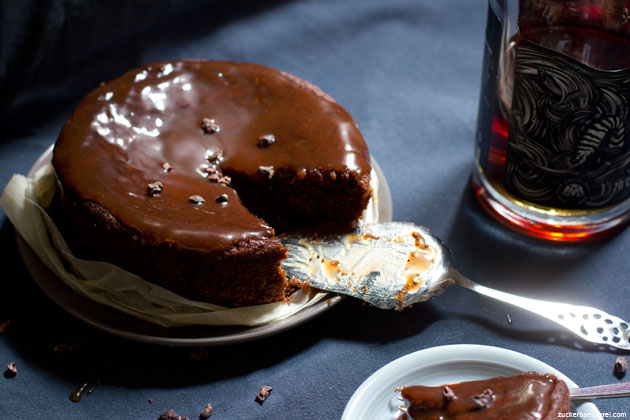
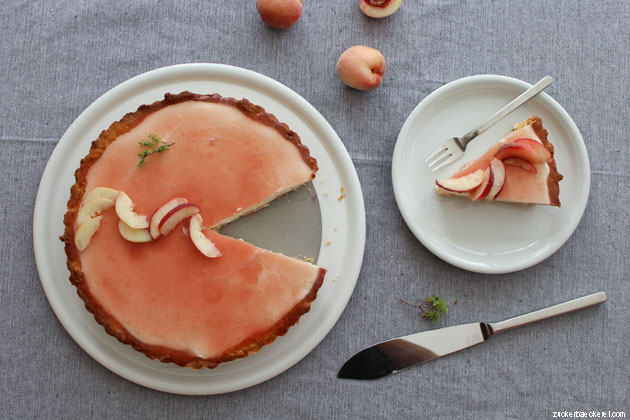
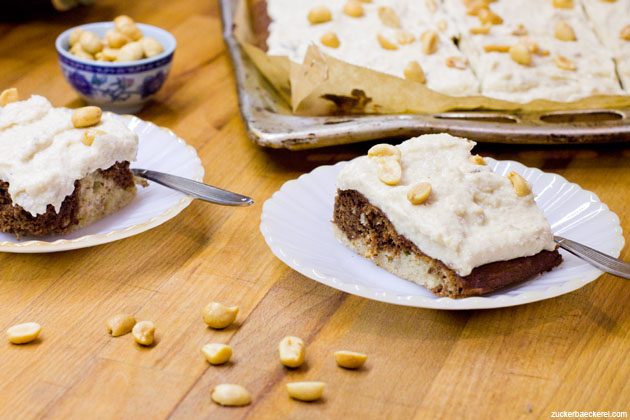
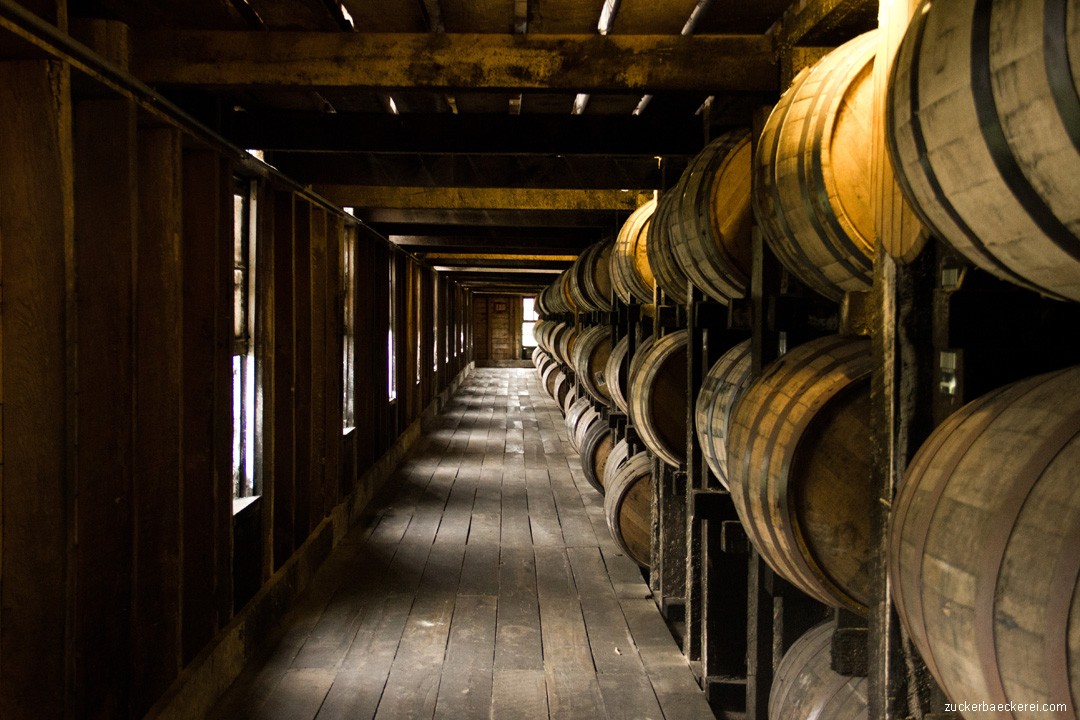


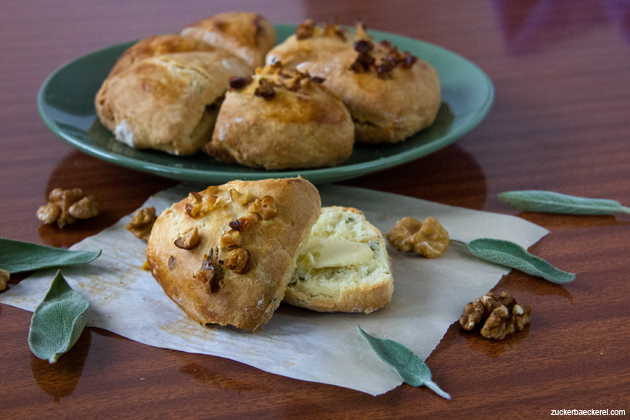
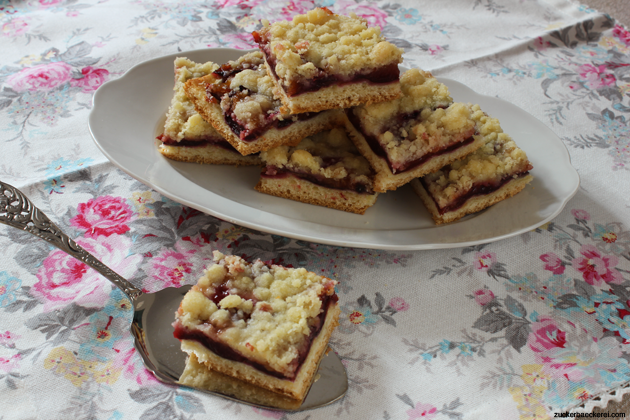
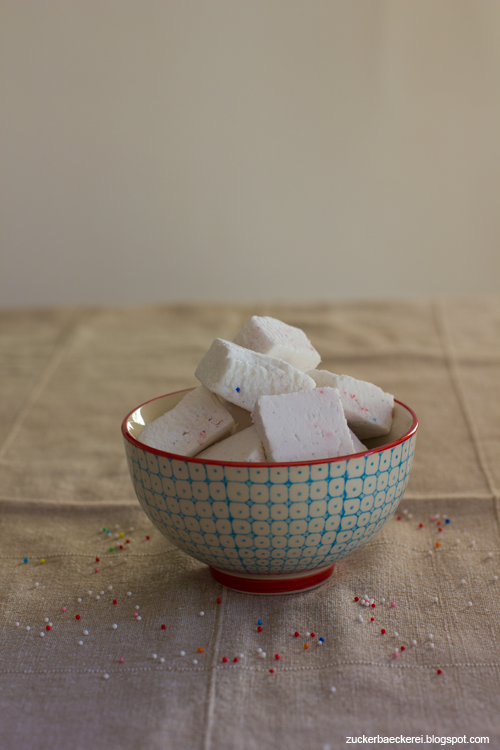
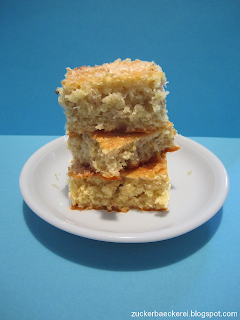
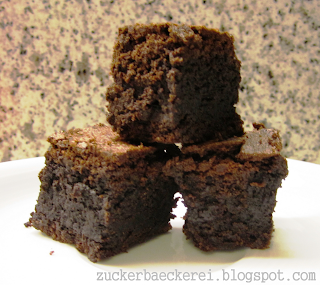
- 2021: Honig-Salz-Erdnuss-Cookies nach Stella Parks
- 2020: Bananenkuchen mit Rumkaramell
- 2019: Pfirsich-Quark-Tarte
- 2018: Schoko-Karamellbananen-Schnitten
- 2017: Eine Reise in die USA, Pt. 2: KY
- 2016: Eine Reise nach Venedig
- 2015: Aprikosenlikör
- 2014: Salbei-Scones mit Walnüssen
- 2013: Zwetschgenfleck
- 2012: Vanillemarshmallows mit Zuckerstreuseln
- 2011: Bananenkuchen
- 2010: Bloomin‘ brilliant brownies

 Hi, ich bin Jana. Seit 2009 veröffentliche ich hier wöchentlich Rezepte, Reiseberichte, Restaurantempfehlungen (meistens in Wien), Linktipps und alles, was ich sonst noch spannend finde. Ich arbeite als Redakteurin bei futurezone.at, als freie Audio-/Kulinarikjournalistin und Sketchnoterin. Lies mehr über mich und die Zuckerbäckerei auf der
Hi, ich bin Jana. Seit 2009 veröffentliche ich hier wöchentlich Rezepte, Reiseberichte, Restaurantempfehlungen (meistens in Wien), Linktipps und alles, was ich sonst noch spannend finde. Ich arbeite als Redakteurin bei futurezone.at, als freie Audio-/Kulinarikjournalistin und Sketchnoterin. Lies mehr über mich und die Zuckerbäckerei auf der 

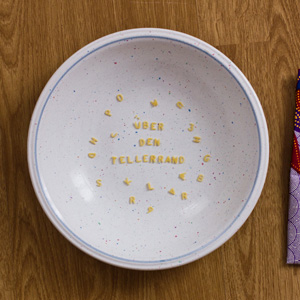 Über den Tellerrand
Über den Tellerrand Bücher
Bücher Zuckersüß
Zuckersüß

